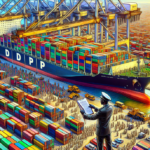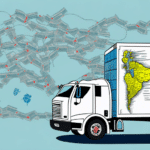Understanding Dynamic Delivery Platforms in Modern Business
In today's fast-paced business environment, adaptability is crucial for maintaining a competitive edge. A Dynamic Delivery Platform (DDP) serves as a vital tool for organizations seeking to stay agile and responsive to evolving market demands. This article delves into the essence of DDPs, exploring their functionality, benefits, applications across various industries, selection criteria, implementation best practices, future trends, and methods to measure their success.
The Importance of Dynamic Delivery Platforms
Dynamic Delivery Platforms are instrumental in enabling businesses to deliver personalized content and services in real-time across multiple channels and devices. This capability ensures that customers receive relevant and timely information tailored to their preferences, behaviors, and locations.
According to a Forbes Tech Council report, companies leveraging dynamic content strategies experience a 20% increase in customer engagement and a 15% boost in conversion rates.
DDPs also streamline and automate workflows, reducing operational costs and enhancing efficiency. With integrated real-time analytics and reporting, businesses can monitor performance, make data-driven decisions, and continuously optimize their processes.
By offering a seamless and consistent customer experience, DDPs help businesses foster stronger relationships, increase customer loyalty, and drive revenue growth. Furthermore, DDPs enable companies to swiftly adapt to changing market conditions and customer needs, ensuring sustained relevance and competitiveness.
Core Components of a Dynamic Delivery Platform
A comprehensive Dynamic Delivery Platform comprises several key components:
- Content Management: Centralized systems for managing and storing various content types, including text, images, videos, and audio.
- Customer Data Management: Databases that collect and store customer information such as profiles, behaviors, preferences, and history.
- Real-time Analytics: Dashboards offering real-time data on customer behavior, performance indicators, and business metrics.
- Personalization Engine: AI-driven systems that leverage customer data to tailor content and services.
- Delivery Engine: Systems that distribute personalized content across all channels and touchpoints.
Integration with existing systems like marketing automation, CRM, and e-commerce platforms is a significant advantage of DDPs, allowing businesses to deliver cohesive and personalized experiences seamlessly.
Security is another critical aspect, with DDPs employing advanced encryption and authentication technologies to protect customer data and ensure compliance with data privacy regulations such as GDPR and CCPA.
Benefits and Use Cases of Dynamic Delivery Platforms
Implementing a DDP offers numerous benefits:
- Enhanced customer experience and satisfaction
- Increased customer loyalty and retention
- Higher revenue and conversion rates
- Operational cost reductions and improved efficiency
- Real-time monitoring and improved decision-making
DDPs are versatile and find applications across various industries:
- Retail: Personalized product recommendations, targeted promotions, and loyalty program management.
- Banking: Customized financial advice, targeted marketing campaigns, and fraud detection.
- Healthcare: Patient engagement, care management, and telemedicine services.
- Media and Entertainment: Personalized content suggestions, targeted advertising, and subscription management.
- Travel and Hospitality: Tailored travel recommendations, targeted promotions, and loyalty program enhancements.
- Education: Personalized learning experiences, progress tracking, and adaptive learning paths.
- Manufacturing: Optimizing production processes, reducing downtime, and improving overall efficiency.
- Telecommunications: Personalized offers, enhanced customer experiences, and reduced churn rates.
- Energy: Optimizing energy consumption, reducing costs, and promoting sustainability.
For instance, in the retail sector, personalized recommendations can significantly enhance the shopping experience. According to a Business Insider study, retailers using personalized recommendations see a 10-30% increase in sales.
Selecting the Right Dynamic Delivery Platform for Your Business
Choosing an appropriate DDP involves evaluating several key factors:
- Scalability and Flexibility: The platform should accommodate business growth and adapt to changing needs.
- Integration Capabilities: Seamless integration with existing systems like CRM, marketing automation, and e-commerce platforms.
- Personalization Features: Robust AI algorithms and personalization capabilities to tailor content effectively.
- Security and Compliance: Strong security measures and adherence to data privacy regulations.
- Vendor Support and Reputation: Reliable vendor support and a strong market reputation.
- Customization Options: Ability to customize the platform to meet specific business requirements.
- Cost and ROI: Evaluating the total cost of ownership against the potential return on investment.
Businesses should conduct a thorough needs assessment and consider conducting a pilot program to evaluate the platform's effectiveness before full-scale implementation.
Best Practices for Implementing a Dynamic Delivery Platform
Successful DDP implementation requires adherence to best practices:
- Develop a Clear Strategy: Establish a well-defined roadmap aligning DDP goals with business objectives.
- Engage Stakeholders: Involve all relevant stakeholders in the planning and implementation process to ensure buy-in and collaboration.
- Ensure Data Quality: Maintain accurate and secure customer data to facilitate effective personalization.
- Integrate Seamlessly: Ensure the DDP integrates smoothly with existing systems and technologies.
- Monitor and Optimize: Continuously track performance metrics and optimize the platform based on insights.
- Provide Training: Equip your team with the necessary skills and knowledge to utilize the DDP effectively.
Adhering to these best practices can significantly enhance the efficiency and effectiveness of DDP deployment, leading to better customer experiences and business outcomes.
Future Trends and Innovations in Dynamic Delivery Platforms
The evolution of DDPs is marked by several emerging trends and innovations:
- Advanced Real-time Personalization: Leveraging machine learning and AI to deliver even more personalized and context-aware experiences.
- Voice and Chatbot Integration: Incorporating voice assistants and chatbots to facilitate natural and conversational customer interactions.
- Blockchain-based Security: Utilizing blockchain technology to enhance data security and ensure transparent, tamper-proof records.
- Multichannel Orchestration: Automating the delivery of personalized messages across various channels like email, SMS, social media, and more.
- Augmented and Virtual Reality: Creating immersive customer experiences through AR and VR technologies, enabling interactive product visualization and virtual try-ons.
- Predictive Analytics: Using data analytics to forecast customer behaviors and preferences, enabling proactive content delivery.
For example, the integration of AR in retail allows customers to visualize products in their environment before purchasing, thereby enhancing the shopping experience and reducing return rates. A Retail Dive article highlights that retailers adopting AR technologies have seen a 25% increase in customer engagement.
Measuring the Success of Your Dynamic Delivery Platform
Evaluating the effectiveness of a DDP implementation involves tracking several key performance metrics:
- Conversion Rates and Revenue: Assessing the impact of personalized content on sales and revenue growth.
- Customer Satisfaction and Loyalty: Measuring customer feedback and repeat business as indicators of satisfaction.
- Engagement Rates: Monitoring interactions with delivered content, including click-through and response rates.
- Operational Efficiency: Evaluating reductions in operational costs and improvements in workflow efficiency.
- Data Accuracy: Ensuring the precision of customer data used for personalization.
Additionally, tracking the number of repeat customers provides insights into customer retention and the long-term effectiveness of the DDP. Implementing regular performance reviews and adjusting strategies based on data-driven insights are essential for sustained success.
Overcoming Challenges in Deploying a Dynamic Delivery Platform
Deploying a DDP can present several challenges, including:
- Data Silos: Fragmented data across different systems can impede effective personalization.
- Security Concerns: Protecting sensitive customer data against breaches and ensuring compliance with regulations.
- Integration Issues: Ensuring seamless integration with existing systems can be technically complex.
- Ongoing Maintenance: Keeping the platform updated and maintained to adapt to evolving business needs.
To mitigate these challenges, businesses should:
- Implement robust data integration strategies to eliminate silos.
- Adopt advanced security measures and stay updated with compliance requirements.
- Choose DDP vendors with proven integration capabilities and support.
- Establish dedicated teams or partnerships for continuous maintenance and updates.
Proactive planning and collaboration with experienced vendors can significantly reduce the complexities associated with DDP deployment.
Conclusion
A Dynamic Delivery Platform is a powerful asset for businesses aiming to deliver personalized, relevant content and services to their customers in real-time. By leveraging the core components of a DDP and adhering to best practices for implementation, companies can enhance customer experiences, optimize operational efficiency, and drive business growth.
The ability of DDPs to collect and analyze customer data in real-time provides invaluable insights into customer behaviors and preferences, enabling tailored marketing campaigns and improved product offerings. Additionally, the scalability of DDPs ensures that businesses can continue to meet the growing demands of their customer base without compromising on efficiency or quality.
As technology advances, the integration of AI, AR, blockchain, and predictive analytics will further enhance the capabilities of Dynamic Delivery Platforms, offering even more sophisticated and immersive customer experiences. Businesses that embrace these innovations and overcome the associated challenges will be well-positioned to thrive in an increasingly digital and personalized marketplace.






















